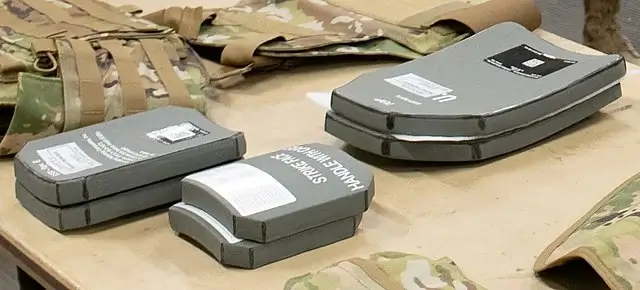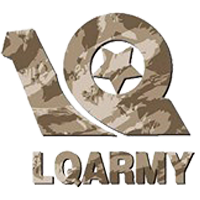Ballistic plates are the unsung heroes of body armor. They stop bullets, absorb impacts, and save lives. But not all plates are created equal.
Some are lightweight but expensive. Others are affordable but heavy. Some stop handgun rounds; others withstand armor-piercing rifles.
In this guide, we’ll break down the science behind ballistic plates, including:
- How materials like ceramic and steel stop bullets.
- What NIJ ratings really mean.
- The trade-offs between weight, cost, and protection.
Whether you’re a law enforcement officer, a prepper, or a security professional, understanding these details ensures you invest in plates that work when it matters most.
What Are Ballistic Plates?
Ballistic plates are rigid inserts worn inside plate carriers or vests. They’re designed to absorb and disperse the energy of bullets, shrapnel, or stab threats. Unlike soft armor (e.g., Kevlar), plates are hard and rated for higher-level threats.
Key Terms:
- Front/Back Plates: Worn on the chest and back.
- Side Plates: Optional protection for the ribs.
- Standalone vs. In-Conjunction: Standalone plates work alone; in-conjunction plates require soft armor underneath to meet their rated protection level.
NIJ Standards: The Gold Standard for Body Armor
The National Institute of Justice (NIJ) tests and certifies body armor in the U.S. Their ratings define what threats a plate can stop.
NIJ Protection Levels
| NIJ Level | Stops | Common Use |
| Level III | Rifle rounds (7.62mm FMJ) | Military, law enforcement |
| Level III+ | .308 M80, 5.56mm M855 (Green Tips) | Civilian “hybrid” threats |
| Level IV | Armor-piercing .30-06 (M2AP) | Military, high-risk scenarios |
Important Notes:
- Level III+ is not an official NIJ rating but a common industry term for plates that exceed Level III and handle specific faster or harder-hitting rounds.
- Always check the NIJ Compliant Products List to confirm certifications.
- Plates are tested with specific bullet speeds and conditions; real-world performance may vary slightly.
 Credit@Wikimedia Commons
Credit@Wikimedia Commons
Ballistic Plate Materials: Ceramic vs. Steel vs. Polyethylene
The material determines a plate’s weight, cost, and stopping power. Here’s how they compare:
1. Ceramic Plates
How They Work: Ceramic (usually alumina or silicon carbide) shatters a bullet’s tip on impact, spreading its energy across the plate. A backing layer (often polyethylene) catches bullet fragments.
Pros:
- Lightweight (4–6 lbs per plate).
- Stops multiple rifle rounds (including Level IV threats).
- Minimal “backface deformation” (bruising).
Cons:
- Expensive ($400–$1,000 per plate).
- Can crack if dropped or mishandled.
- Limited lifespan (5–7 years).
Best For: Military, tactical teams, and anyone prioritizing weight savings.
Brand Example: Hesco 4400 (Level IV ceramic).
2. Steel Plates
How They Work: Hardened steel (usually AR500) deforms bullets on impact. A spall coating (e.g., Rhino Line) reduces fragmentation.
Pros:
- Affordable ($100–$300 per plate).
- Nearly indestructible (20+ year lifespan).
- Stops multiple rounds (Level III threats).
Cons:
- Heavy (8–10 lbs per plate).
- Risk of “spalling” (bullet fragments bouncing off toward the wearer or bystanders).
- Cannot stop Level IV AP rounds.
Best For: Budget buyers, target practice, or vehicle armor.
Brand Example: AR500 Armor Level III.
3. Polyethylene Plates
How They Work: Ultra-high-molecular-weight polyethylene (UHMWPE) fibers absorb bullet energy through layers of woven material.
Pros:
- Lightest option (2–4 lbs per plate).
- Waterproof and buoyant.
- Stops handgun and some rifle rounds (up to Level III).
Cons:
- Melts under extreme heat.
- Cannot stop AP rounds (Level IV).
- Thicker than ceramic/steel.
Best For: Low-profile carry, waterborne operations, or multi-threat environments.
Brand Example: RMA Armament Level III.
Weight vs. Protection: The Trade-Off
Heavier plates offer more durability and stopping power. Lighter plates improve mobility but cost more.
| Material | Weight (per plate) | Max Protection |
| Steel | 8–10 lbs | Level III |
| Ceramic | 4–6 lbs | Level IV |
| Polyethylene | 2–4 lbs | Level III |
Case Study: A SWAT officer might choose ceramic Level IV plates for active shooter scenarios. A hiker preparing for wilderness threats might opt for lightweight polyethylene.
Curve Design: Multi-curve plates wrap around the body, improving comfort and coverage.
Thickness: Thicker plates stop heavier rounds but add bulk.
Environmental Conditions:
- Ceramic cracks in extreme cold.
- Steel rusts if the coating wears off.
- Polyethylene warps in high heat.
Tip: Store plates in a climate-controlled area and inspect them regularly for cracks, coating wear, or delamination.
Myths About Ballistic Plates
“Steel plates are bulletproof.”
False. Steel stops bullets but can’t handle AP rounds (Level IV). Fragmentation also risks injury.
“Ceramic plates only work once.”
Partly true. Ceramic degrades after 1–3 hits but may still stop subsequent rounds depending on damage.
“All NIJ-certified plates are equal.”
False. Certification tests only one sample. Reputable brands (e.g., Hesco) batch-test plates.
How to Choose the Right Ballistic Plate
Assess Your Threat Level:
- Urban security: Level III+ (common rifle rounds).
- High-risk combat: Level IV (armor-piercing threats).
Prioritize Weight or Budget:
- Lightweight = Ceramic or Polyethylene.
- Affordable = Steel.
Check Fit: Plates should cover from collarbone to 3” above the belly button.
FAQs
Q: Can civilians buy Level IV plates?
A: Yes, but check local laws. Most U.S. states allow ownership except where restricted, like Connecticut for online sales.
Q: How long do ceramic plates last?
A: 5–7 years, even if unused. Humidity and temperature affect lifespan.
Q: Are steel plates safe with spall coating?
A: Safer than bare steel, but ceramic/polyethylene are lower risk for spall-related injuries.
Final Tips
Buy Certified: Only trust NIJ-certified plates. Avoid “tested to NIJ standards” claims.
Layer Protection: Pair plates with soft armor for blunt force trauma reduction.
Train: Heavy plates affect stamina. Practice moving, shooting, and climbing in full gear.
If you’re looking for custom plate carriers, tactical vests, or other protective gear, LQARMY is a name you can trust. With over 15 years in the business, we specialize in wholesale, factory production, and custom orders. We ensure you receive the best quality at competitive prices.
Let us help you with your tactical gear needs. Contact us today to learn more about our offerings.


